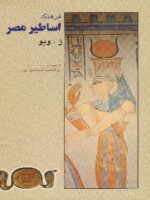پژوهشی در اساطیر ایران
مهرداد بهار، با انتشار كتاب اساطير ايران در سال 1351 در حقيقت گام نخستين را در امر بررسي اساطير ايران برداشت و پژوهشي را آغاز كرد كه هنوز هم با اين ميزان ژرفا و وسعت و نظم و دقتنظر كسي جز خود وي بدان نپرداخته است. اما حاصل مطالعات و پژوهشهاي بعدي وي كه بنا بود به شكل پارهي دوم كتاب پژوهشي در اساطير ايران (1362) درآيد ناتمام ماند. كتاب حاضر مشتمل است بر دو پاره يا دو جلد. پارهي نخست كه خود حاوي سه فرگرد «آفرينش، مردم و فرجام» است، دربر گيرندهي برگردان فارسي گزيدههايي از متنهاي فارسي ميانهي ”بندهش”، ”روايت پهلوي”، ”دينكرد هفتم”، ”گزيدههاي زادسپرم”، ”زند ونديداد”، متنهاي پهلوي و ”ارداويرافنامه” است كه از تصوير آفرينش، مردم و پايان كار گيتي در ذهن نياكان ما سخن ميگويند. فرگرد آفرينش در دوازده بخش، فردگرد مردم در هفت بخش و فرگرد فرجام در چهار بخش تنظيم شده است. پارهي دويم كتاب دربرگيرندهي دو بخش «اسطوره چيست» و بخش ناتمام «سرزمين و مردم» است.
Mehrdad Bahar’s accurate and brilliant edition and translation of Aradawiraf Nameh revives the original appalling effect of this book. To describe the Hell narrated by Wiraf, an insignificant image (among ghastly images of Kharfastrah-chewed bodies) of a torture may give us a clue: a Man held upside-down, every hole in his body stuffed by Xrafstra (Khrafstra: pest-legions: insects, rats, etc.) and Daivas (demons) drip semen in his mouth and nostrils. Such punishments are usually the consequence of minor sins (lie, deception, greed, etc.) not the major sins such as burying the dead, touching the dead, adultery, touching a woman in her period of menstruation or murder. The Question one surely asks at this point is what kind of sick sadomaniac God can order such tortures and according to which system of Law (which cannot even be typified as despotism) such an incongruity between the sin and its penalization on the one hand and an imbalance between Hell and Heaven on the other hand can exist? The answer gives a new dimension to the book, Wiraf as a Zoroastrian mage (certainly a puppet of the Z. crowd) programs a new thread of monotheism to plague itself but this time from the Outside. The book’s sole stratagem is building a process of exteriorization and senseless judicial system so brutal that intentionally leaves merely two options for Man, either participation in this infernal senseless (joining the Z. Crowd’s infested monotheism from within) or negative despair which eventually succumbs into a ferocious reactionary transgression against the whole system, a seemingly radical option that Wiraf seeks to lure people to it by confounding the linearity between Judgment and its metrons, ad baculum and materializing a strictly anthropomorphic Hell which is too concrete and revolting to be ignored










